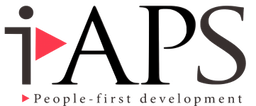
Third-Party Monitoring of USAID-Funded Global Communities IMPACT Program in Yemen
13 November 2023
i-APS was contracted to design and implement Third-Party Monitoring (TPM) for Global Communities USAID-funded project “Integrated Modalities to Promote Agricultural, Cash-for-Work & Training in Yemen (IMPACT II) Global”. The IMPACT II program aimed to address the urgent multi-sector humanitarian needs of 21,742 vulnerable, conflict-affected Yemenis in Aden, Lahj, and Dhale governorates (South Yemen). The activities to be monitored included agricultural inputs, including seeds, tools, fodder, and livestock, market-driven vocational training, cash-for-work opportunities related to building community infrastructure, and support to asset building groups and livelihoods restoration, water supply and hygiene. The activities were funded by both USAID OFDA and FFP (now BHA) to contribute to FFP’s Yemen Nutrition Program strategy for 2020 by promoting an integrated response to malnutrition risk in emergency-affected areas of Yemen.
As part of its contract, i-APS was charged with developing a TPM system to monitor the status of referenced activities and document the achievement of results, intended and not-intended, of project activities as a part of Global Communities’ accountability to target populations and its donors. An additional objective of the TPM was to identify data related to efficiency and effectiveness of project activities and provide recommendations and learnings to support adaptive management. i-APS TPM methodology was focused on providing independent and verifiable data to support accountability and learning to Global Communities (and ultimately USAID) through focusing on monitoring of 1) availability of services and linkages with work plans and adherence to technical specifications, 2) relevance/appropriateness of the services to the needs of local communities, 3) accessibility of services to the target groups and 4) acceptability of services (e.g. cultural appropriateness, gender sensitivity in the Yemen context).
Tools included household/beneficiary surveys (total of 1,644 surveys using 9 different structured questionnaires, sample sizes generated during each monitoring round using list-based random sampling at 95% confidence interval), and key informant interviews (113 total).
